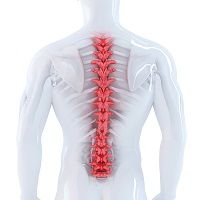Article
Protein Improves Mobility after Spinal Cord Injury
Author(s):
Researchers examined the effects of protein interleukin 37 in order to determine the effects on physiopathology of spinal cord injury in several mouse models of inflammatory diseases.

A protein could improve mobility following spinal cord injuries, according to research published in the journal Proceedings of the National Academy of Sciences.
Researchers from the Universitat Autonoma de Barcelona in Spain in collaboration with study authors from all over the globe examined the effects of protein interleukin 37 (IL 37) in order to determine the effects on physiopathology of spinal cord injury in several mouse models of inflammatory diseases. The mice used in the investigation were genetically modified to produce the human form of the protein. The protein was administered immediately following spinal cord injury.
The team learned that using IL 37 immediately after the spinal cord injury allowed the mice to retain a certain degree of their mobility. The protein suppressed the mice’s body’s inflammatory response which minimized the spinal tissue degeneration and functional disabilities. The researchers explained that IL 37 was discovered 15 years ago, but it was difficult to study until now. The protein is not naturally synthesized in mice, they added in a press release.
The study authors continued that their work could lead to a new therapeutic strategy for the treatment of acute spinal cord injury — currently, there is not a viable treatment for clinical use. The study authors also believe that their findings could be useful for the treatment of other neurodegernative illnesses because the body’s inflammatory response also contributes significantly to these diseases.
“IL 37, a member of the interleukin 1 (IL 1) family, broadly reduces innate inflammation as well as acquired immunity,” the authors concluded in the paper. “Whether the anti inflammatory properties of IL 37 extend to the central nervous system remains unknown, however…This study presents novel data indicating that IL 37 suppresses inflammation in a clinically relevant model of spinal cord injury, and suggests that recombinant IL 37 may have therapeutic potential for the treatment of acute spinal cord injury.”




